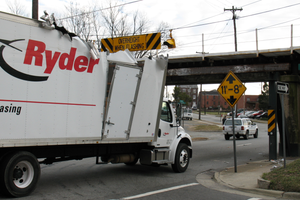About
When the London Underground was being constructed in the 1860s, rather than tunneling under existing buildings, deep tunnels were dug right through the city and then covered up again. But not all of the properties razed to make way for the railway were rebuilt.
Case in point: The houses at 23 and 24 Leinster Gardens, which were demolished to build the tunnel connecting Paddington with Bayswater. The Underground uses this open-topped portion of the line to ventilate a large section of the surrounding Tube system, but the sacrificed homes were never reconstructed. This left a rather unsightly hole in an otherwise very sightly block of Empire 5-Story houses.
And so, a false façade was constructed to conceal the wound. It matches its neighbors in every important detail, except that the windows are painted on, rather than being made of glass. They did a really nice job; you could live in that neighborhood for years, walking by this address frequently, and still not notice the deception if you're not looking for it.
From the back of the block, however, you can see what's going on. The houses on either side are braced against each other by a number of sturdy steel struts, and the Underground tracks are visible—and most audible—just below.
Related Tags
Know Before You Go
From Bayswater or Queens way underground stations, walk down to Bayswater Road and turn left, then left onto Leinster Terrace.
From the Elizabeth Line exit of Paddington Station (Platform 1 of the railway station), take Cleveland Terrace, then left onto Leinster Gardens.
No. 23 and 24 are towards one end of the grand white-painted terrace, next to the Henry Hotel. Walk round the corner of Craven Hill Gardens where the subterfuge is immediately obvious.
Community Contributors
Added By
Published
October 27, 2016






































